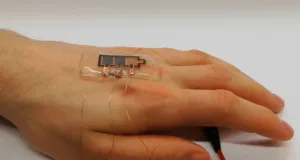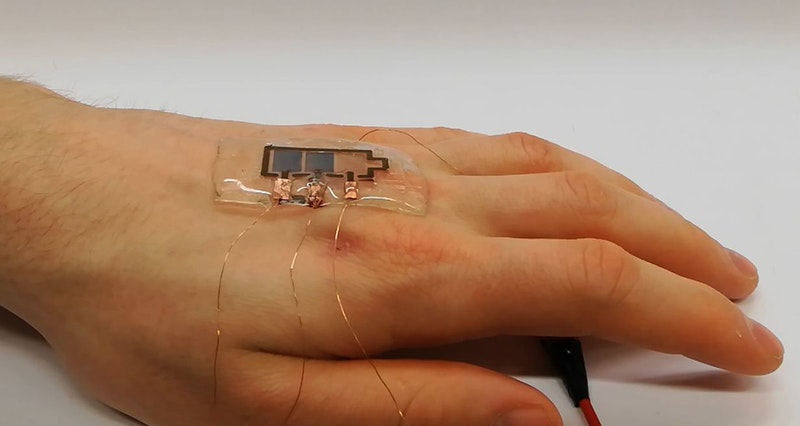Displays are a significant source of electronic waste and back in the CRT days, I paid a lot of attention to the disposal of old TVs and monitors. I also did some work, some years ago, on recycling LCDs, so my attention was caught when I saw a headline about ‘biodegradable displays’.

Now, the displays being discussed are not the kind of high information colour displays that TVs and monitors are, but then neither were the first LCDs or CRTs. The displays are small and monochrome and depend for their operation on electrochromic effects. These are displays that work by applying an electric field to materials that change their colour. The devices are very low power and low voltage and rely on reflection.
 Electrochromic Display Principle (Image:Ynvisible)
Electrochromic Display Principle (Image:Ynvisible)
One of the advantages of electrochromic displays is that they can be made with materials that can be created as inks, so the display can be patterned by inkjet printing. A disadvantage is the speed of the displays. A paper published last year described materials that had response times around half a second (447ms and 650ms) as ‘ultrafast’. This kind of display also tends to have low levels of contrast.
The displays that are the topic of this article were developed by the Karlsruhe Institute of Technology (KIT) and described in a paper in the Journal of Materials Chemistry. It’s not surprising that Germany is the source of this development – the country is incredibly strong in printing technology and also has a mainly very good record on environmental issues. As I have heard over the years from the DFF, there is plenty of working going on, too, into flexible electronics.
The inkjet printed displays in the paper have an electrochromic contrast of 32 ± 4% (contrast ratio of 1.7 +- 0.3:1) and switching times of 3.0 ± 1.4 s which the group says is ‘comparable to the spincoated reference devices’.
The display was developed to show its potential as a skin-worn device that might be used for health monitoring and were printed onto a cellulose di-acetate (CA) substrate. A gelatine-based electrolyte was used with PEDOT:PSS pixels connected to gold electrodes. The display could be bent to a radius of 8.5mm and was bent up to 10,000 times with just a drop in electrochromic contrast of 15.9% after that number of bends. Further work is needed on stretching and compression and to be clear about the cause of the degradation.
The biodegradability was tested according to ISO 14855 in ‘a compost milieu at 25 °C. Around 80% of the display had degraded after about 9 weeks (a plateau). The PEDOT:PSS material, the paper said, ‘is presented as biocompatible in many literature reports, (but) it failed a biodegradability test according to the ISO 14852.’
“This is the first demonstration of a biodegradable display which undergoes and successfully passed a standardized, independently performed degradation test”.
The paper includes a detailed discussion of the biodegradability.
As the paper points out, the authors believe that ‘exhibited innocuous degradability of this device could be extended to other electronic elements’.
Analyst Comment
It’s good to see work continuing to mitigate the impact of displays on the environment. I hate contributing to the torrent of electronic waste and I know from work I have done on recycling is that the mantra of being green is ‘reduce, reuse and then recycle’
Now, getting me to reduce the number or size of displays I use is tricky? However, Re-use can be possible.
Like many, during the extended lockdowns of the last year, I have done some clearing out of the large number of PCs and displays that were cluttering my house up (although several still remain). Monitors that are almost a decade old are still useful and I have managed to find homes for most of them with families that were struggling with home schooling without enough devices. I was also able to convert a number of old notebook PCs to Chromebooks using CloudReady. The software (bought by Google towards the end of 2020) is designed to convert PCs that were not really usable with the latest versions of Windows into acceptable devices as Chromebooks. I managed to re-home five of the old notebooks that were tucked away in my office. Now to find a way to re-use the rack of HP servers that I was using for my research business until mid-2020!



